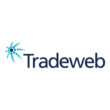Speed is not enough for exchange competition
Speed is becoming less of a competitive advantage for exchanges as regulation and the need to support long-term investors comes to the fore, according to Christian Katz, chief executive at SIX Swiss Exchange.
“The race for speed is slowing down for exchanges,” he told Banking Technology. “The public wants more safety, transparency and stability. If you have a good balance between latency, capacity, stability and functionality, the relative advantage of getting faster diminishes.”
SIX Swiss Exchange switched to a new trading platform in April last year, which was built using Nasdaq OMX’s X-stream INET technology. It offers latency of around 37 microseconds, and is the fastest such exchange platform in Europe, according to Katz. Yet he insists that speed was not the main motivation. Instead, the exchange is focused on building up its product range and maintaining a healthy balance of different kinds of market participants.
Previously, exchange consolidation has been a recurrent theme of European and North American securities markets business activity. But recent years have seen the failure of a number of such large scale exchange mergers, including the proposed combination of NYSE Euronext with Deutsche Boerse, the London Stock Exchange with Canada’s TMX, and the merger of Australia’s ASX with the Singapore Exchange.
“It’s hard to find good investment opportunities in the exchange space from consolidation,” admitted Katz.
In March, SIX Swiss Exchange will launch trading of investment funds, a market that is aimed partly at retail investors. The exchange is also planning to open an OTC market for warrants and structured products. Katz estimates that the exchange’s client base is roughly half long-term investors, and half retail – and that roughly half are domestic and half are international.
Other projects this year include introducing sponsored access in Q3, and expanding SIX’s agreement with buy-side crossing network Liquidnet to cover other markets outside Switzerland, notably the UK and Germany. SIX Swiss Exchange has operated interoperable clearing since 2003 and currently allows investors to choose whether to clear with SIX x-Clear or LCH. Clearnet. Katz is also proud of the fact that his exchange is the reference market for approximately 15% of European ETF market.
“In business you should do good things and talk about them,” he said. “We don’t talk first and then deliver, we deliver first then talk. That’s why the long-term investor is coming to SIX Swiss Exchange. We have the largest average trade size in European blue chips – €20,000 – because of the mix of participants we have attracted to our exchange.”
At the heart of the debate for exchanges has been the role of high-frequency traders. Senior members of the buy-side in the UK have attacked HFTs as “vultures” that simply prey on institutional flows and take advantage of long-term investors for short-term gains. Others contend that exchanges have effectively prostituted themselves to HFT in a bid to increase trading volumes, at the expense of everyone else in the market.
Uncertainty and investor disquiet over HFT and the role of different market participants has led several institutions to build trading platforms that target investors disillusioned with mainstream equity markets. In February, Bank of America Merrill Lynch launched its new trading system, Instinct Natural, a crossing network geared towards customers that want to trade in blocks, although long-term investors have reacted with a mixture of praise for its intentions and scepticism about its ability to deliver larger trade sizes. However, Katz insists that HFT does not play such a divisive role on SIX Swiss Exchange.
“HFT participation on our exchange is below the European average,” he said. “The order to trade ratio is below 20. We don’t see the need for draconian controls on HFT – our own market controls are effective. The same applies to our pre-trade risk controls.”
The debate over pre-trade risk controls stems from the flash crash of May 2010, in which $1 trillion was briefly wiped off the value of the US stock market after an erroneous trade was entered by an asset manager using an algorithm with no regard for time or price. In Canada, regulator IIROC has introduced new rules requiring all brokers to have pre-trade risk controls in place to prevent erroneous trades from reaching the market. Regulators have also intervened in the US, where so-called ‘naked’ sponsored access is already banned.
Nevertheless, the question of whether the responsibility for pre-trade risk controls should lie with the exchange or with the broker has never been universally agreed. For Katz, the issue is best left to the market.
“I’m not convinced the regulator should decide,” he said. “In Switzerland, our regulator demands pre-trade risk controls and we would provide them anyway – we are not open to ‘naked’ sponsored access. But it’s up to the market to decide where they want those controls to reside. Personally, I believe a balance of controls on both sides is the strongest answer.”












































